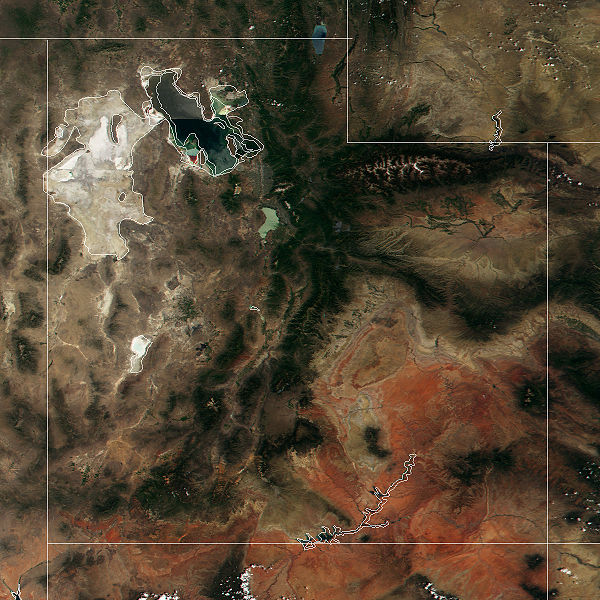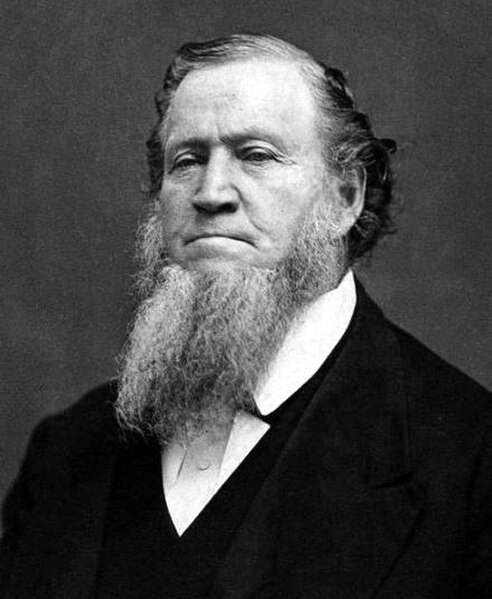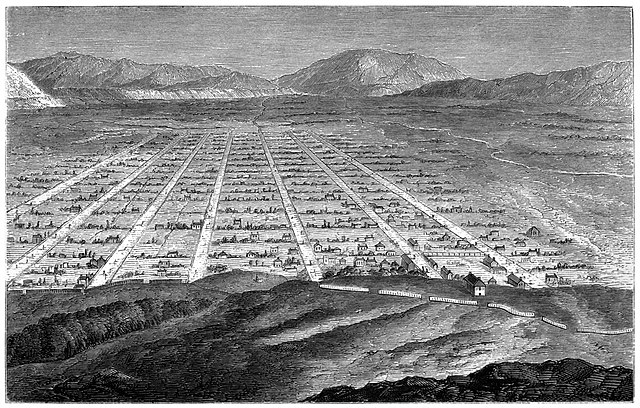The Great Salt Lake Desert is a large dry lake in northern Utah, United States, between the Great Salt Lake and the Nevada border. It is a subregion of the larger Great Basin Desert, and noted for white evaporite Lake Bonneville salt deposits including the Bonneville Salt Flats.
The desert's white salt is depicted in Utah's northwest.
Middle Spring in the Fish Springs National Wildlife Refuge at the northeast corner of the Fish Springs Range
View of the desert from an airplane
Great Salt Lake Desert as seen from Pilot Peak
Utah is a landlocked state in the Mountain West subregion of the Western United States. It borders Colorado to its east, Wyoming to its northeast, Idaho to its north, Arizona to its south, and Nevada to its west. Utah also touches a corner of New Mexico in the southeast. Of the fifty U.S. states, Utah is the 13th-largest by area; with a population over three million, it is the 30th-most-populous and 11th-least-densely populated. Urban development is mostly concentrated in two areas: the Wasatch Front in the north-central part of the state, which is home to roughly two-thirds of the population and includes the capital city, Salt Lake City; and Washington County in the southwest, with more than 180,000 residents. Most of the western half of Utah lies in the Great Basin.
Brigham Young led the first Mormon pioneers to the Great Salt Lake.
A sketch of Salt Lake City in 1860
Deseret Village recreates Utah pioneer life for tourists.
The Golden Spike where the First transcontinental railroad was completed in the U.S. on May 10, 1869, in Promontory, Utah








